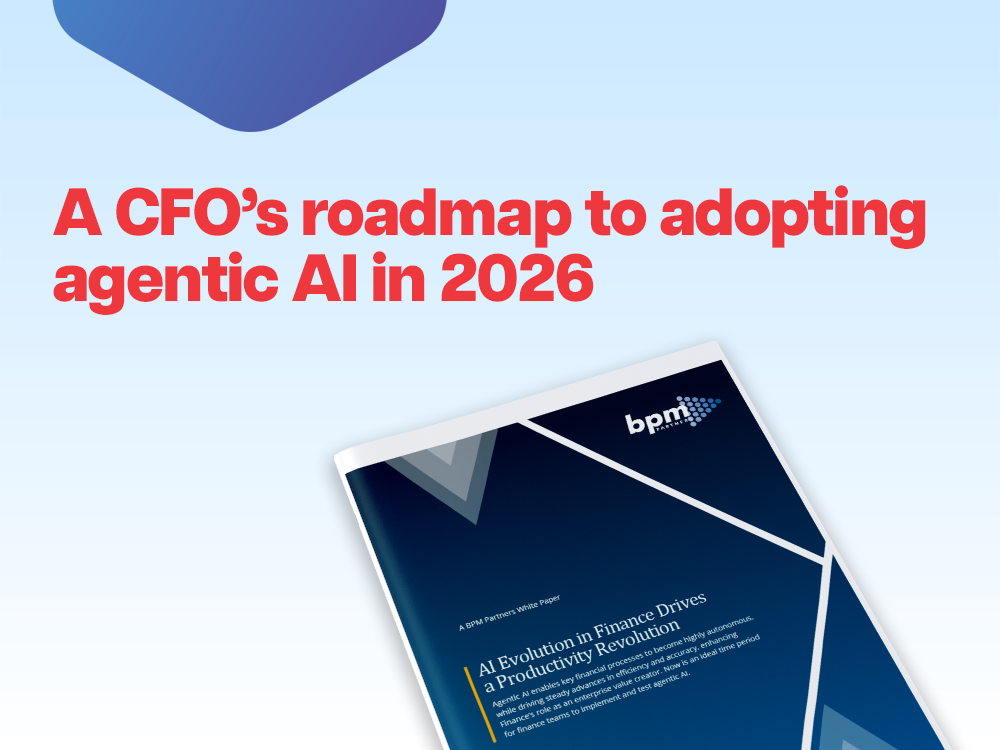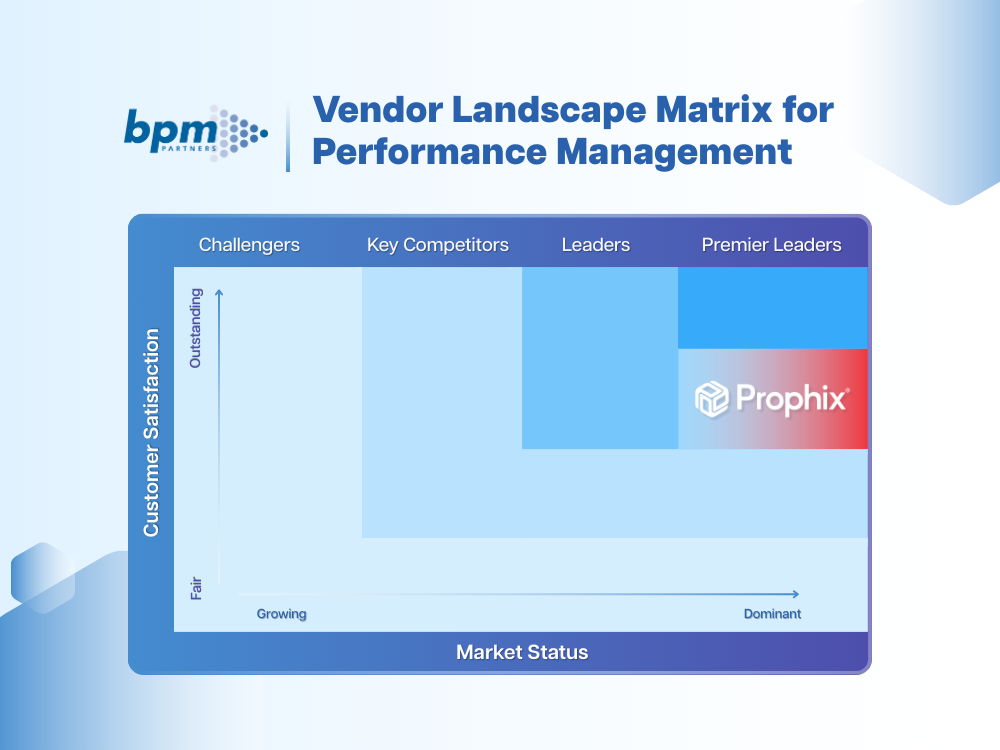Download the BPM Partners Whitepaper
A finance team's complete guide to ESG compliance
ESG compliance is crucial for building trust, meeting regulations, and ensuring the long-term success of your company.
February 26, 2025In 2025, consumers, investors, and regulators are placing greater emphasis on companies’ environmental, social, and governance (ESG) practices.
However, navigating the maze of regulations and frameworks can feel overwhelming. Figuring out what’s required, who should be involved, and when submissions are due can be time-consuming and tedious.
In this comprehensive guide, we’ll cover everything your finance team needs to know about ESG compliance, including key definitions, global ESG regulations, and actionable steps to create your own ESG compliance strategy.
What is ESG?
Before diving into the nuances of ESG compliance, it’s helpful to understand what ESG is, where it came from, and what the goals are.
Environmental, social, and governance (ESG) refers to a set of criteria used to assess the impact companies make on the environment and society, and how these practices are governed.
Environmental, social, and governance
ESG is an acronym for environment, social, and governance. Companies are evaluated based on their environmental and social impact, as well as how they govern these processes. ESG criteria provide a framework for assessing a company’s performance beyond financial metrics, focusing on sustainability, ethical practices, and long-term value creation.
Although ESG disclosures are not mandatory in all countries and jurisdictions, some regions, such as the EU and UK, have introduced mandatory reporting requirements for certain companies. Many organizations choose to share this information publicly, as consumers, investors, and regulators are becoming more concerned about environmental impacts, social responsibility, and corporate governance practices.
Where did ESG come from?
Research into sustainability began gaining global attention in the 1980s with the publication of the UN’s Brundtland Report, which introduced the concept of sustainable development. The first ESG framework, however, was published in the UN Global Compact’s 2004 report “Who Cares Wins,” developed in collaboration with financial institutions to link ESG practices to financial performance.
Since then, significant advancements in ESG adoption and regulation have been made, with a 155% increase in regulations since 2011.
What is an ESG strategy?
An ESG strategy is a set of goals, actions, and measurable targets set by a company to address their environmental and social impact, and the quality of their governance structures. These strategies are designed to meet stakeholder expectations, align with regulatory requirements, and contribute to long-term sustainability.
For example, a company might have an ESG strategy to reduce the amount of pollution generated by their manufacturing process by 15% over five years, while also committing to renewable energy adoption, improving supply chain transparency, and regularly reporting on progress to ensure accountability.
What are the goals of ESG?
Broadly speaking, the goals of ESG are to reduce the negative environmental and social impact of corporations while fostering positive outcomes for the planet, society, and stakeholders. ESG also aims to ensure that governance structures used to manage these processes are ethical, fair, transparent, and aligned with long-term sustainability goals.
What is ESG compliance?
ESG compliance is a set of regulations, frameworks, or standards established by a governing body that pertain to environmental, social, and governance practices. ESG compliance standardizes the collection, reporting, and analysis of this data to improve transparency. ESG compliance also helps companies evaluate and communicate their overall ESG performance to stakeholders.
In some countries, such as the EU and the UK, ESG disclosures are mandatory under regulations like the Sustainability Disclosure Requirements (SDR) or the Sustainable Finance Disclosure Regulation (SFDR), among others.
Environmental compliance
Environmental compliance refers to a company's adherence to environmental laws, regulations, and standards aimed at minimizing its environmental impact. This often involves collecting and reporting data on:
- Energy - The quantity of energy used in manufacturing processes, transportation, office operations, and other business activities, including efforts to improve energy efficiency or transition to renewable energy sources.
- Greenhouse gases - The volume of greenhouse gases produced by the company during its operations, including direct emissions, indirect emissions from purchased energy, and other indirect emissions across the value chain.
- Water - The quantity of water consumed in the company's manufacturing processes or other operational activities, as well as the quality of water discharged and how it is treated.
- Pollution - The amount and type of pollution generated by the company, including air, water, and soil pollution, and how this pollution is managed or mitigated.
- Waste - The volume of waste produced through the company's operations, including hazardous and non-hazardous waste, and how this waste is disposed of, treated, or recycled.
- Materials - How materials are procured, whether they are sourced sustainably, and if they are renewable, recyclable, or responsibly managed.
- Encroachment on nature - The impact of the company's operations on surrounding environments, ecosystems, and wildlife, including efforts to preserve biodiversity and protect natural habitats.
Social compliance
Social compliance refers to a company's adherence to laws, regulations, and ethical standards related to its social impact. This often involves collecting and reporting data on:
- Employee relations and labor practices - Metrics such as employee turnover rate, tenure, fair compensation, adherence to international labor standards, workplace health and safety compliance, and efforts to prevent child labor or forced labor.
- Diversity, equity, and inclusion (DEI) - Initiatives to promote diversity in the workforce, equal opportunities, and inclusive practices, including metrics like gender pay gap analysis, representation of underrepresented groups in leadership, and DEI training programs.
- Customer engagement and product responsibility - Data on product safety, quality, pricing fairness, customer privacy, ethical marketing practices, and accessibility of products or services.
- Supply chain management - Monitoring the sustainability and ethical practices of a company's suppliers, including compliance with human rights standards, fair labor practices, and environmental sustainability.
- Community impact - Contributions to the local communities where the company operates, including philanthropic efforts, infrastructure investments, partnerships with local organizations, disaster relief efforts, and programs aimed at improving education, healthcare, or economic opportunities.
Governance compliance
Governance compliance refers to a company's adherence to laws, regulations, and best practices related to corporate governance, ethical conduct, risk management, and transparency. This often involves collecting and reporting data on:
- Corporate governance - The structure and diversity of the board, its independence, effectiveness, and experience, as well as executive compensation policies, alignment of compensation with long-term performance or ESG goals, and the extent of management's ownership in the company.
- Codes of business conduct - The company's ethical guidelines, including its stance and procedures regarding corruption, bribery, and whistleblower policies, as well as how it handles breaches of these codes.
- Risk and crisis management - The company's approach to identifying, managing, and mitigating risks, as well as its preparedness for potential crises.
- Supply chain management - Oversight of the supply chain to ensure suppliers adhere to good governance and ethical practices, including anti-corruption policies and transparency in their operations.
- Tax strategy - The company's approach to tax planning, reporting, and governance, ensuring compliance with all relevant laws and regulations, as well as transparency in tax reporting and avoidance of aggressive tax avoidance schemes.
- Materiality, policy influence, & impact measurement - Identifying ESG issues that are most relevant to the company and its stakeholders (materiality), the company's influence on public policy related to ESG factors, and how it measures and reports its impact on these issues using frameworks like GRI or SASB.
Who in a company is responsible for ESG compliance?
Responsibility for ESG compliance typically spans multiple roles and departments within a company. Many large organizations appoint a Chief Sustainability Officer (CSO) to oversee ESG initiatives and ensure compliance with regulations and standards. In smaller companies, ESG may be integrated into existing roles or managed by a committee that evaluates ESG practices.
Regardless of how your ESG team is structured, they must work closely with finance, legal, risk management, corporate strategy, HR, operations, and investor relations to ensure that ESG practices align with business objectives.
A company’s board of directors can also provide oversight of ESG compliance, ensuring that ESG practices align with governance principles, regulatory requirements,, and long-term business objectives.
ESG reporting, scoring, frameworks, and regulations
Now that you’re familiar with what’s involved in ESG compliance and how it’s managed within organizations, let’s dive into the specifics of ESG reporting, scoring, frameworks, and regulations.
What is ESG reporting?
An ESG report is a document used by organizations to communicate the steps they’re taking to address the environmental, social, and governance impact of their operations. ESG reports usually follow a standardized framework that allows companies to communicate their ESG efforts in a consistent and comparable way, creating a ‘common language’ for investors, regulators, and customers.
ESG reporting is essential for attracting investors, meeting regulatory requirements, and building trust with stakeholders by demonstrating a company’s commitment to sustainability and ethical practices.
What is ESG scoring?
ESG scoring is a method used to measure a company’s sustainability and ethical performance. ESG scores evaluate how a company manages environmental, social, and corporate governance risks and opportunities within its operations.
ESG scores are typically assigned by third-party rating agencies, such as MSCI, Sustainalytics, or S&P Global, and are used by investors, stakeholders, and regulators to assess a company’s ESG performance.
ESG scores are divided into three categories:
- Environmental issues like renewable energy use, pollution control, energy efficiency, carbon footprint, and climate change strategy.
- Social issues like human rights, labor practices, community engagement, and diversity, equity, and inclusion.
- Governance issues like shareholder rights, risk management, executive compensation, board diversity and structure, and transparency in decision-making.
What are ESG frameworks?
An ESG framework is a set of guidelines companies use to identify, measure, and report on environmental, social, and governance criteria. ESG frameworks act as a set of benchmarks, helping organizations communicate their ESG performance with stakeholders, including investors, regulators, and customers. Frameworks also establish best practices for managing ESG risks and opportunities.
Depending on where your organization is located, it may be subject to multiple ESG frameworks, which we’ll discuss later on.
What are ESG regulations?
ESG regulations are legally binding requirements that standardize the collection, reporting, and disclosure of environmental, social, and governance data. These regulations ensure that companies provide consistent and accurate information about their ESG performance, enabling stakeholders to evaluate a company’s environmental and social impact.
ESG regulations vary by country, region, and industry. In some jurisdictions, such as the European Union, ESG disclosures are mandatory for many organizations under regulations like the Corporate Sustainability Reporting Directive (CSRD). In other regions, such as the United States, ESG reporting is often voluntary but is increasingly subject to regulatory scrutiny.
The goal of ESG regulations is to improve transparency and accountability by allowing stakeholders to make informed decisions about a company’s sustainability efforts.
The benefits of ESG compliance
Beyond giving stakeholders more confidence in your company’s sustainability and ethics, there are many benefits to ESG compliance.
Improves financial performance
Investment in ESG initiatives can significantly enhance a company’s financial performance by opening up new markets, improving operational efficiency, and reducing risks. Companies with strong ESG practices are better positioned to avoid financial risks, such as regulatory penalties, reputational damage, or disruptions caused by climate change.
Regulators and investors are also more inclined to support companies with robust ESG practices, which can lead to new investment opportunities and partnerships. By aligning with sustainability goals, companies can also reduce costs, such as through energy efficiency or waste reduction, further improving financial performance.
Attracts investors and builds trust
Companies with strong ESG compliance are more likely to attract ESG-focused investors and gain access to lower-cost capital, as they are perceived as lower-risk and more sustainable. This trust also extends to other stakeholders, such as regulators and business partners, who value transparency and accountability.
Builds trust with the public and with new talent
Companies that have a positive market perception often experience increased customer loyalty, which can drive sales and support operational expansion. ESG compliance also enhances employer branding, making it easier to attract and retain top talent, particularly among younger generations who prioritize sustainability and ethical practices.
Improves operational sustainability
ESG compliance encourages companies to adopt more sustainable practices, which can lead to long-term operational improvements. By focusing on environmental initiatives, such as energy efficiency, waste reduction, and sustainable sourcing, companies can lower operational costs.
Social and governance improvements, such as fostering a diverse and inclusive workplace or implementing risk management practices, can enhance employee satisfaction, productivity, and organizational resilience.

The burdens of ESG compliance
Now that we’ve covered the benefits of ESG compliance, let’s take a look at the burdens.
Data integrity can be costly to ensure, especially if lacking a single source of truth
ESG involves many aspects of a business including diversity initiatives, environmental issues, and executive compensation. Collecting and validating both financial and non-financial data can be costly, especially if the organization lacks a centralized system or a single source of data truth.
Maintaining data integrity often requires significant investments in finance technology, like a financial performance platform. Without these resources, organizations may face inefficiencies and inconsistencies in their reporting.
Training employees takes time and is expensive
There are many nuances to ESG compliance, depending on your country, region, and industry. This can make it time-consuming and expensive to train new employees, who may not be familiar with evolving regulations and frameworks. Ongoing training is often necessary to keep up with changes, adding to the overall cost and time burden of ESG.
A lack of standardization creates a moving target around ESG compliance, which creates uncertainty every year
There are no universal data collection, validation, or reporting requirements for ESG compliance, which makes it challenging for multinational companies to adhere to multiple reporting frameworks. This can create uncertainty and increase compliance costs for organizations, who have to continuously adapt to changing requirements.
Investors or individuals within the finance function may view ESG compliance as a cost center instead of a place that creates value
The time required to collect and validate ESG data may result in it being viewed as a cost center, rather than an initiative that generates value. This perception can make it difficult to get buy-in from investors and individuals within the finance function to support new initiatives or report on the progress of ongoing projects. A lack of understanding of the long-term benefits of ESG compliance, such as risk mitigation, improved reputation, and access to ESG-focused capital, often contributes to this challenge.
Learn how to create a compliant ESG report step-by-step.
ESG compliance around the world
Next, let’s cover ESG compliance around the world, including governing bodies, regulations, and frameworks.
ESG compliance in Canada
Governing ESG bodies in Canada
ESG compliance in Canada is shaped and influenced by several governing bodies and institutions, each playing a role in setting standards, enforcing regulations, and guiding companies toward sustainable and socially responsible practices. Here are key organizations driving ESG efforts in Canada:
- Canadian Securities Administrators (CSA)
- Office of the Superintendent of Financial Institutions (OSFI)
- Environment and Climate Change Canada (ECCC)
- Canada’s Procurement Ombudsman and Treasury Board of Canada Secretariat
- Provincial and territorial bodies
ESG regulations in Canada
ESG reporting in Canada is not mandatory but is increasingly in demand by investors and stakeholders. However, federally regulated financial institutions such as banks and insurance companies are required to report on ESG factors. Canadian ESG regulations include:
- Corporate Diversity Reporting
- S-211 Supply Chain Reporting
- Canadian Securities (CSA) Corporate ESG Reporting and Disclosure
- CSA ESG Investment Fund Disclosure
- Supplier ESG Disclosure for Large Federal Contractors
- Canada’s Climate Investment Taxonomy
ESG frameworks in Canada
Canadian companies rely on several globally recognized ESG frameworks to guide their reporting and disclosure practices. These frameworks ensure consistency, transparency, and accountability in ESG reporting, helping businesses meet investor and stakeholder expectations. Frameworks include:
- Task Force on Climate-related Financial Disclosures (TCFD)
- Global Reporting Initiative (GRI)
- Sustainability Accounting Standards Board (SASB)
- UN Sustainable Development Goals (SDGs)
- Carbon Disclosure Project (CDP)
- Integrated Reporting (IR) Framework
- Canada’s Climate Investment Taxonomy
- Voluntary Indigenous Engagement Frameworks
ESG compliance in the USA
Governing ESG bodies in the USA
ESG compliance in the U.S. is shaped by federal agencies, regulatory bodies, and organizations that set standards and ensure corporate accountability. These institutions play key roles in developing ESG-related guidelines and monitoring compliance. The major governing bodies driving ESG efforts in the U.S. include:
- Securities and Exchange Commission (SEC)
- Environmental Protection Agency (EPA)
- Department of Labor (DOL)
- Office of Federal Contract Compliance Programs (OFCCP)
- State-level regulatory bodies
ESG regulations in the USA
ESG reporting in the United States is not mandatory but faces increasing demand due to investor pressure and proposed regulations. Certain industries are subject to more stringent ESG-related guidelines, and proposed rules from federal agencies are expected to significantly shape mandatory ESG compliance in the near future. U.S. ESG regulations include but are not limited to the following:
- Proposed SEC Climate Disclosure Rules
- Dodd-Frank Act Disclosure Rules (Conflict Minerals and CEO Pay Ratio Disclosure)
- Clean Air Act and Clean Water Act (EPA)
- Employee Retirement Income Security Act (ERISA) – ESG Investing Amendment
- Federal Supplier ESG Requirements
- California SB-260 (Climate Corporate Data Accountability Act)
ESG frameworks in the USA
Many U.S. companies rely on globally recognized ESG frameworks to guide their reporting and ensure compliance with investor expectations. These frameworks support organizations in providing transparent, consistent, and material ESG information across all sectors. The most common ESG frameworks include:
- Task Force on Climate-related Financial Disclosures (TCFD)
- Sustainability Accounting Standards Board (SASB)
- Global Reporting Initiative (GRI)
- Carbon Disclosure Project (CDP)
- Integrated Reporting (IR) Framework
- United Nations Sustainable Development Goals (SDGs)
- Equator Principles
ESG compliance in the UK
Governing ESG bodies in the UK
ESG compliance in the UK is shaped by several governing bodies and institutions. These entities set the regulatory and operational standards that guide corporate ESG practices and reporting. Here are the major organizations driving ESG efforts in the UK:
- Financial Conduct Authority (FCA)
- Department for Environment, Food & Rural Affairs (DEFRA)
- The Pensions Regulator (TPR)
- Companies House
- United Kingdom Environmental Agency
ESG regulations in the UK
The UK has one of the most developed and structured ESG regulatory environments. While some ESG disclosures are encouraged, others are mandatory, particularly for publicly listed and large private companies. ESG regulations in the UK include:
- Task Force on Climate-related Financial Disclosures (TCFD) Requirements
- The UK Corporate Governance Code
- S172(1) Statement (Companies Act 2006)
- Modern Slavery Act 2015
- Streamlined Energy and Carbon Reporting (SECR)
- The Environment Act 2021
- Gender Pay Gap Reporting
ESG frameworks in the UK
UK companies use a range of globally recognized ESG frameworks to align their sustainability reporting with best practices and meet regulatory requirements. These frameworks provide guidelines for transparency, consistency, and accountability. Frameworks include:
- Task Force on Climate-related Financial Disclosures (TCFD)
- Global Reporting Initiative (GRI)
- Sustainability Accounting Standards Board (SASB)
- Carbon Disclosure Project (CDP)
- Integrated Reporting (IR) Framework
- United Nations Sustainable Development Goals (SDGs)
- Voluntary Biodiversity Reporting Frameworks
ESG compliance in the EU
Governing ESG bodies in the EU
ESG compliance in the EU is guided institutions and governing bodies that establish and enforce regulations and standards across member states. These organizations work together to create a unified approach to sustainability and ESG practices within the European Union. The key governing bodies include:
- European Commission
- European Securities and Markets Authority (ESMA)
- European Banking Authority (EBA)
- European Environment Agency (EEA)
- Member State Authorities
ESG regulations in the EU
The EU has one of the most advanced ESG regulatory landscapes globally, with a legal framework that mandates extensive sustainability reporting and adheres to ambitious environmental, social, and governance standards. The primary regulations include:
- Corporate Sustainability Reporting Directive (CSRD)
- EU Taxonomy
- Sustainable Finance Disclosure Regulation (SFDR)
- European Green Deal
- Product Environmental Footprint (PEF) Initiative
- EU Circular Economy Action Plan
- Social Governance Standards
ESG frameworks in the EU
EU companies use various globally recognized ESG frameworks to standardize sustainability reporting and ensure compliance with EU regulations. These frameworks support businesses in enhancing transparency, consistency, and materiality in their disclosures. The most frequently used frameworks include:
- Global Reporting Initiative (GRI)
- Task Force on Climate-related Financial Disclosures (TCFD)
- Sustainability Accounting Standards Board (SASB)
- Carbon Disclosure Project (CDP)
- Integrated Reporting (IR) Framework
- EU Taxonomy-aligned Reporting
- UN Sustainable Development Goals (SDGs)
- Biodiversity and Nature Frameworks
ESG compliance in Asia
Governing ESG bodies in Asia
Asia's approach to ESG compliance is driven by a mix of regional regulatory authorities, government bodies, and stock exchanges. These organizations play significant roles in setting sustainability standards and ensuring corporate accountability. Governing bodies include:
- Securities and Exchange Board of India (SEBI)
- Hong Kong Stock Exchange (HKEX)
- Japan’s Financial Services Agency (FSA)
- China Securities Regulatory Commission (CSRC)
- Monetary Authority of Singapore (MAS)
- Financial Supervisory Service of South Korea (FSS)
- ASEAN Capital Markets Forum (ACMF)
ESG regulations in Asia
ESG regulations across Asia vary by country, but common threads include mandatory and voluntary reporting requirements, green finance, and climate-related initiatives. Some of the most significant regulations in Asia include:
- Business Responsibility and Sustainability Reporting (BRSR) (India)
- Corporate Governance Code (Japan)
- Green Finance Guidelines (China)
- Hong Kong Stock Exchange ESG Reporting Guide (HKEX)
- Sustainable Bond Standards (ASEAN)
- Climate-related Risk Management Guidelines (Singapore)
- Korea Stewardship Code (South Korea)
- Taiwan Corporate Governance Roadmap
ESG frameworks in Asia
Companies across Asia utilize global ESG frameworks to standardize their reporting and align with international expectations. These frameworks help businesses communicate their sustainability efforts effectively while meeting both regional and global regulatory requirements. Frameworks include:
- Global Reporting Initiative (GRI)
- Task Force on Climate-related Financial Disclosures (TCFD)
- Carbon Disclosure Project (CDP)
- Sustainability Accounting Standards Board (SASB)
- Integrated Reporting (IR) Framework
- UN Sustainable Development Goals (SDGs)
- Voluntary Green Finance Frameworks
How to create an ESG compliance strategy
Now, you’re ready to create an ESG compliance strategy that will foster transparency, improve accountability, and create stakeholder trust. Let’s dive into the key steps!
Assess ESG factors
The first step of creating an ESG compliance strategy is to identify that ESG regulations and frameworks you’re required to comply with. Understanding the nuances of these frameworks and regulations will ensure you collect, validate, and report on the relevant data for your country, region, and industry.
This is also a good opportunity to review past ESG initiatives to evaluate their success. If they fall short, consider how you could improve your approach moving forward.
Involve management and stakeholders
Next, you can begin involving management and stakeholders in the process of creating an ESG strategy. As discussed earlier, ESG compliance should be a cross-functional effort between finance, legal, risk management, corporate strategy, HR, operations, and investor relations to ensure your strategy aligns with your corporate objectives.
Establish clear guidelines, timelines, and requirements with the team before establishing realistic goals.
Set realistic goals
Setting realistic goals for your organization is a key part of creating an ESG compliance strategy. Consider what’s feasible for your company to accomplish in the allotted timeframe. It’s also important to review ESG initiatives that are already underway, including key KPIs that must be tracked and analyzed.
Performing a materiality assessment can also help you identify and prioritize the ESG issues that are most significant—or "material"—to your business and stakeholders.
Select an ESG framework
In step one, you identified the regulations and frameworks that are required of your company, based on its location and industry. Now it’s time to select the ESG framework you will use to organize, analyze, and present your data to stakeholders, including employees, investors, and regulators.
For companies who have to abide by mandatory disclosures, there is not a lot of choice in ESG frameworks. However, if your company is communicating this data voluntarily, you have more flexibility in how you report on your ESG initiatives. Choosing an ESG framework (e.g., GRI, SASB, TCFD) to organize and present your data is a critical step in ensuring transparency and consistency in reporting.
Build your team
Next, you need to build your team to support you in actioning your ESG compliance strategy. Consider inviting stakeholders from a variety of cross-functional teams, as they will have a unique perspective based on their role in the business and access to the necessary data to support your strategy.
Clearly communicate expectations, roles, and responsibilities so that everyone on your team is clear about what they need to do, and when.
Implement your strategy
Now it’s time to implement your ESG compliance strategy! Action the necessary steps to achieve your goals and start tracking the associated KPIs.
Track your progress and write your ESG report
Setup regular touchpoints with your ESG compliance team to track your progress. After data collection and validation is completed, you can begin writing your ESG report according to the framework and regulations identified earlier in the process.
Ensure everyone on your team has an opportunity to contribute to and provide feedback on your ESG report before sharing it with key internal and external stakeholders.
Reassess regularly
An effective ESG compliance strategy involves reassessing your progress and goals regularly. As your operations evolve, it’s important to look for new opportunities to lessen your environmental and societal impact or improve how you govern these initiatives.
FAQs about ESG compliance
Let’s cover some frequently asked questions about ESG compliance.
What's an ESG compliance checklist?
An ESG compliance checklist is a set of pre-defined steps or tasks that you can follow to ensure your organization is compliant with local, regional, and industry-specific regulations and frameworks.
What are some examples of ESG compliance?
Some examples of ESG compliance include:
- Reporting – creating reports to showcase the headway your company is making in regard to ESG initiatives.
- Environmental – Reducing your carbon footprint, emissions, and energy use.
- Social – Promoting diversity, health, safety, and inclusion at your company.
- Governance – Ensuring your company has fair compensation policies, a diverse board of directors, and anti-corruption policies.
Who monitors ESG compliance?
Internally, a Corporate Sustainability Officer, ESG committee, or an appointed individual will monitor the company’s ESG compliance and progress. Externally, investors and regulators oversee a company’s efforts to comply with the relevant regulations and frameworks.
Are there ESG compliance courses or certifications?
Yes, there are several ESG compliance courses or certifications, including:
- CFA Institute - Certificate in ESG Investing
- Corporate Finance Institute - ESG Certificate Program
- SGS - ESG Certification
- The Society for Corporate Governance - Certified Corporate Governance Professional (CCGP) Certification
- European Federation of Financial Analyst Societies (EFFAS) - Certified Environmental Social and Governance Analyst (CESGA) program
- The International Financial Reporting Standards (IFRS) Foundation - Fundamentals of Sustainability Accounting (FSA) Credential
- Asian Banking School - ESG Disclosure, Reporting and Compliance
- Chartered Governance Institute UK & Ireland - Strategic ESG: Driving Impact and Value
It’s important to choose a course or certificate that covers your industry, country, or region specific requirements for ESG.
What are some companies that have achieved ESG compliance?
Companies that are recognized for their strong ESG performance include brands like Patagonia and Microsoft. In global ESG rankings, companies such as Avnet, Inc., Triple Flag Precious Metals Corp., and Randstad NV are highlighted for their leadership in sustainability and ethical practices.
Conclusion: ESG compliance with Prophix
ESG compliance is crucial for building trust, meeting regulations, and ensuring the long-term success of your company. By prioritizing transparency and accountability, you can stay ahead in a competitive market, attract investors, and earn customer loyalty.
Prophix One simplifies ESG compliance by centralizing data from your environmental, social, and governance business systems. With flexible imports, integrations, and validation rules, you can maintain full control over your data at every stage of the process. Plus, Prophix One automates reporting and compliance, saving time and eliminating costly customizations.
Take control of ESG compliance with confidence.
Insights for next-gen finance leaders
Stay ahead with actionable finance strategies, tips, news, and trends.





